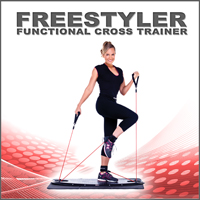Exercise
Olympic Triathlete Stuart Hayes visits the GSK Human Performance Lab
as he looks to improve his preparations for the 2014 seasonThe World Triathlon season kicked off in Auckland (5-6...
Read more
Look Good, Feel Good in 2013
Spartan Race Leads The New Year's RevolutionAs we head into the New Year, we’re all looking for ways to improve o...
Read more
The Freestyler: Review
The Freestyler is a compact, portable, lightweight (only 7lbs for the base), full body workout system. It uses ex...
Read more











